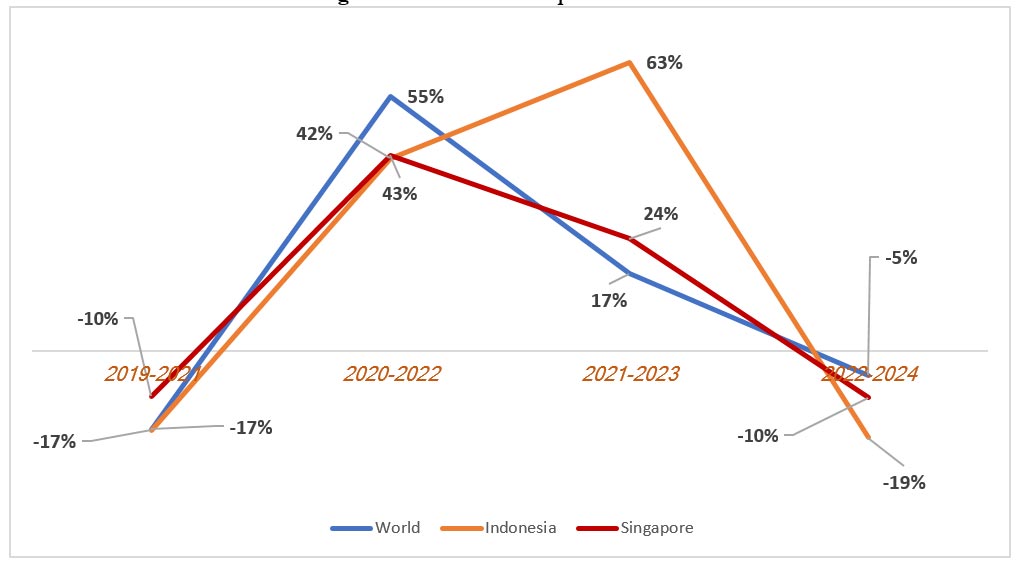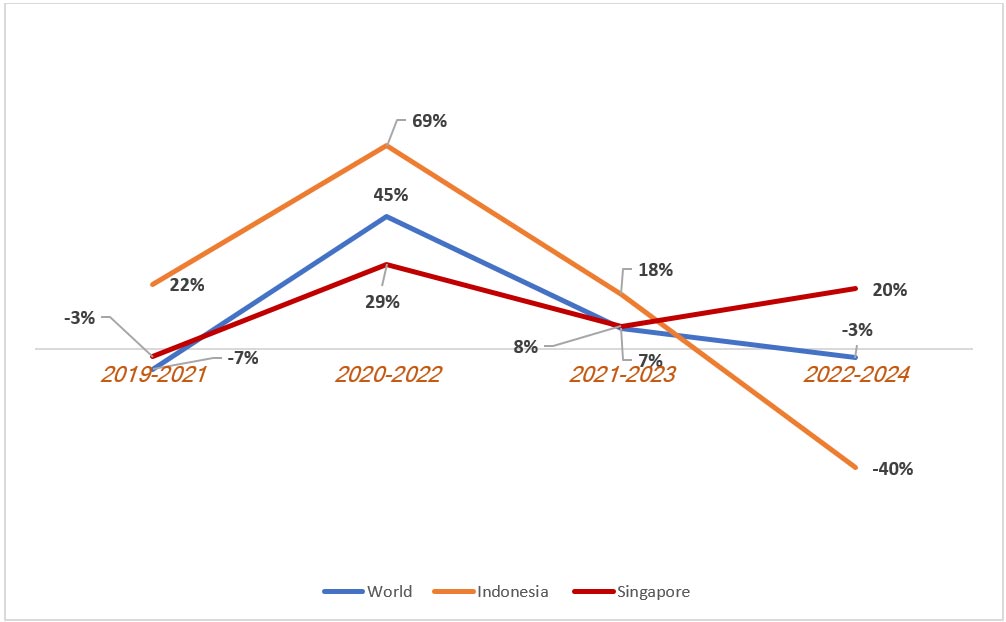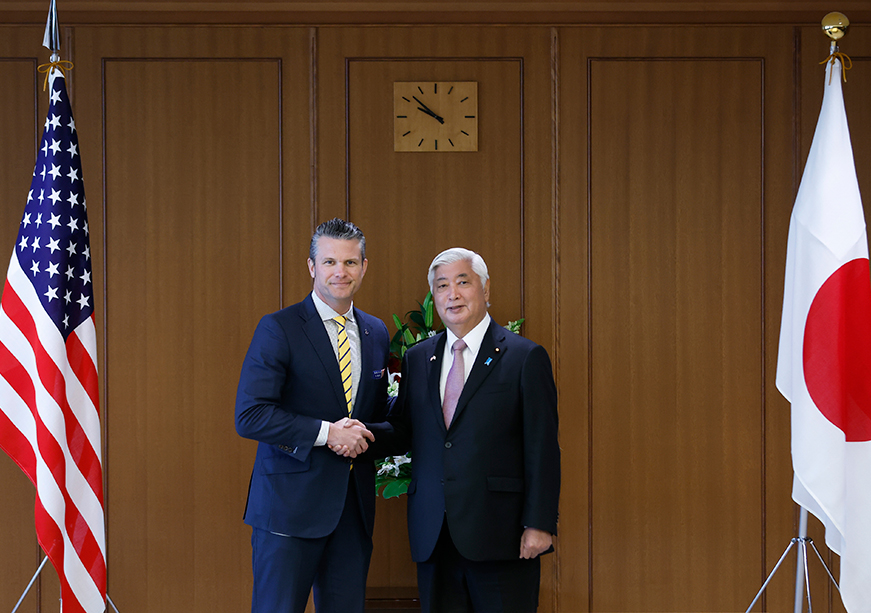
Image Source: Getty
India’s economic liberalisation in the 1990s under Prime Minister Narasimha Rao and the adoption of the Look East and subsequent Act East Policy boosted connectivity with Southeast Asia, enhancing trade with countries like Indonesia. Moreover, India’s engagement with ASEAN, particularly through agreements like the ASEAN-India Free Trade Agreement (AIFTA) and ASEAN-India Trade in Goods and Services Agreements (AITIGA), has further expanded trade by reducing tariffs and increasing market access between the two nations.
Indonesia continued to grow as a significant trading partner, and by 2022, it surpassed Singapore, becoming India's sixth-largest trading partner overall.
Although Indonesia had been a key trading partner, it trailed behind countries like Singapore and Malaysia in terms of its share of India's total trade until 2000. However, by 2003, it surpassed Malaysia, reaching US$ 3.2 billion. As India deepened its engagement with ASEAN, Indonesia emerged as one of India's top 10 trading partners by 2010. This growth was notably reflected after the AIFTA was implemented, with total trade rising to US$ 15.6 billion, particularly in sectors such as refined petroleum, coal briquettes, and palm oil. Indonesia continued to grow as a significant trading partner, and by 2022, it surpassed Singapore, becoming India's sixth-largest trading partner overall. Nonetheless, challenges persist in bilateral relations when it comes to trade and investments.
Trade patterns between India and Indonesia
To analyse the trade dynamics between India and Indonesia, it would be helpful to compare India’s trade with Indonesia and Singapore—currently, India’s largest trading partner in ASEAN—and the rest of the world over the last five years (2019-2024), as shown in Figure 1 and 2.
Figure 1: India’s Total Imports

Source: Made by Author
As indicated in Figure 1, India saw a significant drop in global imports between 2019 and 2021, affecting imports from Indonesia and Singapore. The COVID-19 pandemic led to significant disruptions in supply chains and a sharp drop in imports and exports to both countries. Key sectors, such as petroleum products, saw a dramatic decline in export value due to plummeting global oil prices and reduced demand.
The COVID-19 pandemic led to significant disruptions in supply chains and a sharp drop in imports and exports to both countries.
However, there was a rebound in India's total imports between 2020 and 2022, including imports from both Indonesia and Singapore. From 2021 to 2023, India’s global imports increased by 17 percent, with Indonesia contributing 63 percent and Singapore 24 percent to this growth. During this period, Indonesia surpassed Singapore, becoming India’s largest trading partner. This import surge from Indonesia was due to changes in India’s import policy, where the basic import duty on crude oils like crude palm oil, crude soybean oil, and crude sunflower oil was completely removed. For refined oils, the basic tax on refined soybean and sunflower oils was lowered from 32.5 percent to 17.5 percent, and the tax on refined palm oil was dropped from 17.5 percent to 12.5 percent.
Another potential reason for the upsurge in this period was disruptions in global edible oil supply chains caused by the Russia-Ukraine war, which increased India’s dependence on alternative sources of vegetable oils like Indonesia. However, from 2022 to 2024, India’s global imports declined by 5 percent as shown in Figure 1, with imports from Indonesia decreasing by 19 percent. The decline was marked by a 32 percent drop in mineral products and a 20 percent decrease in animal and vegetable by-products, the top two imported commodities during this period as per Ministry of Commerce data. One reason for this decline is attributed to Indonesia's temporary palm oil export ban in 2022, aimed at stabilising its domestic supply and controlling local prices, which disrupted the supply chain for Indian importers.
With an aim to increase the oil palm production area and boost crude palm oil production to 11 lakh tonnes by 2025-26, the Government of India launched the National Mission for Edible Oils - Oil Palm (NMEO-OP) in August 2021, aimed at boosting self-reliance in edible oil production. This also explains the sudden decrease in India’s imports from Indonesia.
Figure 2: India’s Total Export

Source: Made by Author
Conversely on the export side, between 2019 and 2021, India's global exports fell by 7 percent, and exports to Indonesia increased by 22 percent in the same period, reflecting strong trade ties despite the global downturn. From 2020 to 2022, India experienced a significant 45 percent growth in its global exports, where exports to Indonesia surged by 69 percent, a growth rate exceeding that of Singapore. Mineral fuels and mineral oils, like crude and refined petroleum, became the leading export commodities, accounting for 28 percent of total exports in 2021-2022, which then increased to 39 percent in 2022-2023. In 2022, refined petroleum was the most imported product in Indonesia.
From 2022 to 2024, India's exports to Indonesia fell by 40 percent, reflecting a downturn in trade relations. This drop also coincided with a sharp decrease of 73 percent in the export of mineral products and a 19 percent decline in the export of vehicles (excl. railway and tramway), which were India's top two export categories during this time.
From 2020 to 2022, India experienced a significant 45 percent growth in its global exports, where exports to Indonesia surged by 69 percent, a growth rate exceeding that of Singapore.
One of the reasons for this decline was the ban imposed on the trading of broken rice by India in 2022, followed by a prohibition on wheat exports in 2022 and in 2023 exports of non-basmati rice were also prohibited. A minimum export price for onions was also introduced. Furthermore, in 2024, a 40 percent export tariff on staple vegetables was implemented, with onion shipments remaining banned for over six months. In June 2024, there was also a decrease in India's year-by-year exports to Indonesia, primarily by a decrease in product exports in sugar since India banned its exports for the 2023-24 season to ensure that there is enough sugar for domestic consumption and ethanol production.
Thus, a steady and positive trade relationship can be observed between India and Indonesia from 2020-2023 with the relationship reaching a peak between 2021-2023. However, a downward trend has also followed from 2022-2024, coinciding with a decline in India’s overall trade with the world. The trade relations highlight two important challenges like the intervention of domestic policies by India and Indonesia, hamstringing the commerce between the two countries, and the concentration of trade in a few sectors, leading to greater effect.
Challenges and opportunities
As Table 2 illustrates, India's CAGR with the world shows a balanced and consistent growth of 7 percent across imports, exports, and total trade. Meanwhile, India’s trade with Indonesia has grown faster than average. Imports from Indonesia (9 percent) have grown faster than exports to Indonesia (8 percent), unlike Singapore.
The 9-percent total trade CAGR between India and Indonesia reflects a deepening and strengthening trade relationship. While the tilt towards higher imports indicates a trade imbalance, the overall robust growth in both directions highlights the increasing economic interdependence between the two countries. As India continues to focus on Southeast Asia, Indonesia’s importance as a trade partner will likely continue to rise.
Table 2: Compound Annual Growth Rate (CAGR) of India’s Imports, Exports, and Total Trade with the World, Indonesia, and Singapore from 2019-2023
| Countries |
Import |
Export |
Total |
| World |
7% |
7% |
7% |
| Indonesia |
9% |
8% |
9% |
| Singapore |
8% |
10% |
9% |
Source: Made by Author
Amid possible geopolitical disruptions, an approaching global recession, and shifts in worldwide demand, the trade relationship between India and Indonesia remains strong, though not without difficulties. A steep decline of 24 percent in trade was observed in 2022-2024. Additionally, India’s imports from Indonesia have consistently been greater than its exports to Indonesia, allowing Indonesia to boast of a trade balance in its favour. India’s trade deficit with Indonesia has steadily worsened since 2019, from US$ 10,932 million to US$ 17,421 million.
Some obstacles, such as non-tariff barriers, affect 70 percent of Indonesian tariff lines and 45 percent of India's. Besides, FTA utilisation remains low at around 25 percent, including the maintained significant exclusion lists—11 percent for India and 4 percent for Indonesia.
Major Indian companies such as Tata Power and Reliance are actively involved in projects ranging from renewable energy to manufacturing.
Despite these challenges, there’s optimism. India has made substantial investments in Indonesia, amounting to approximately US$ 54 billion, primarily through infrastructure, energy, textiles, automotive, and IT sectors. Major Indian companies such as Tata Power and Reliance are actively involved in projects ranging from renewable energy to manufacturing. Though Indonesian investment in India has remained modest at US$647 million, Indonesia is encouraging further Indian investment, particularly in its new capital and key industries like automobiles and pharmaceuticals, aiming to diversify trade and investment opportunities. There is great potential for increased trade in digital technology between India and Indonesia. Both countries have made significant progress in digital transformation—India has excelled in building digital public infrastructure, improving public service delivery, and driving innovation. At the same time, Indonesia has advanced the digitalisation of MSMEs.
Indonesia can take inspiration from Singapore by diversifying its export portfolio beyond traditional commodities exploring sectors like technology, pharmaceuticals, and manufacturing. This shift would reduce its dependence on commodities like palm oil and coal. By investing in infrastructure to enhance logistics, streamlining digital trade processes, and formalising bilateral agreements, Indonesia can facilitate smoother trade flows and strengthen economic ties with key partners. Adopting these strategies could help Indonesia become a more competitive player within ASEAN and bolster trade with India. As both nations pursue ambitious economic goals—India aiming for third-largest economy status by 2027 and Indonesia targeting fifth by 2045—their trade relations could grow significantly, potentially reaching US$ 50 billion in the near future.
Ishanya Sharma is a Research Intern and Abhishek Sharma is a Research Assistant at the Observer Research Foundation
The views expressed above belong to the author(s). ORF research and analyses now available on Telegram! Click here to access our curated content — blogs, longforms and interviews.






 PREV
PREV



